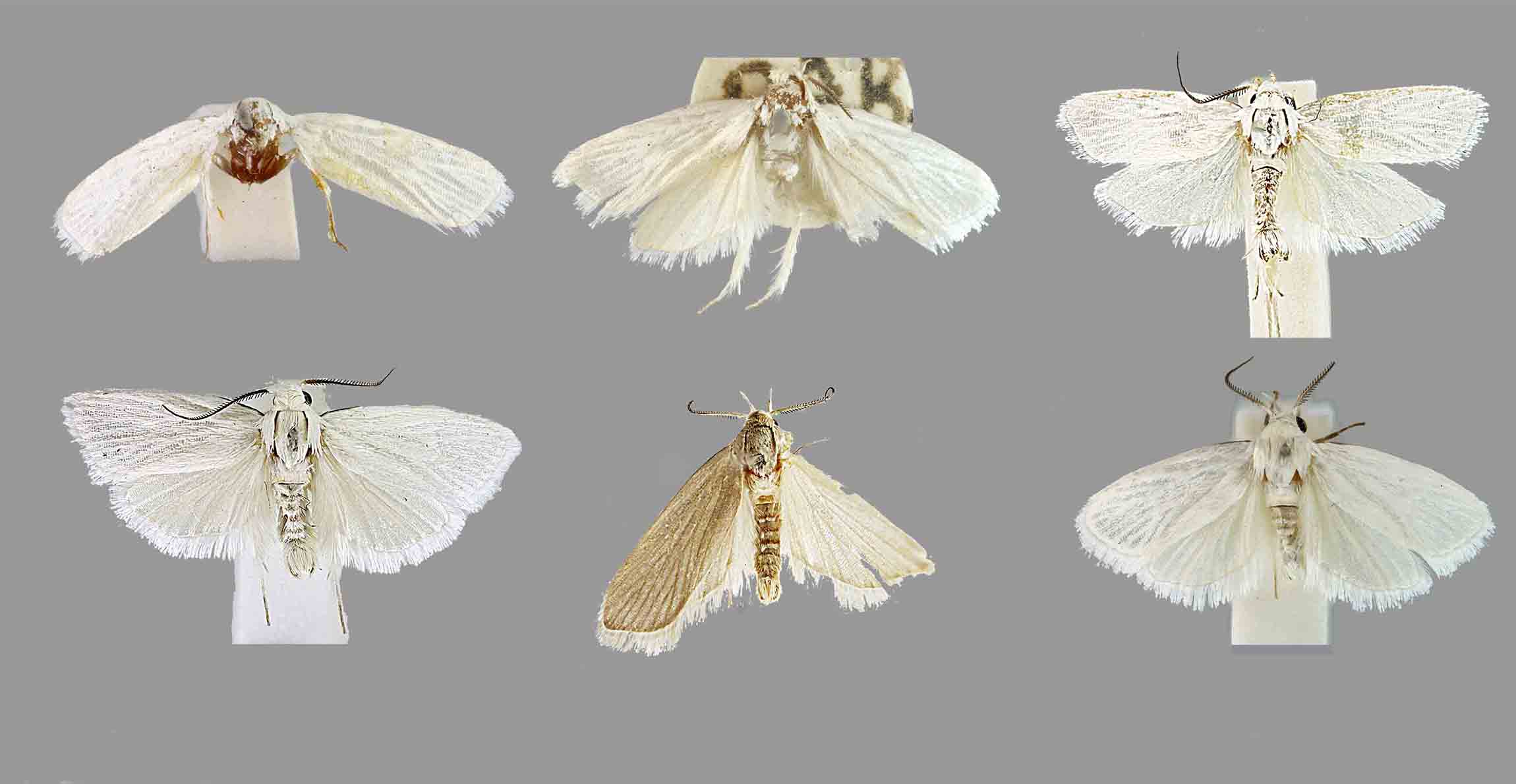Scientists were able to prove that rather than being a single neglected species, Topiris is in fact a genus of 14 species, including 11 species which are new to science.

The genus Topiris as revised in the paper © Mark Sterling, Trustees of NHMUK
- A moth neglected by experts for a century is found to have been collected by Alfred Russel Wallace 169 years ago
- Cutting-edge techniques allowed scientists to show the moth as belonging to a genus comprising 14 species, 11 of which are new to science
- One of the new species has been named after Greta Thunberg
Scientists at the Natural History Museum (NHM), London, have discovered that a long-overlooked moth specimen in the Museum’s collection was in fact collected by explorer and naturalist, Alfred Russel Wallace, in 1855. This was at the same time as he was formulating his own revolutionary ideas on the origins of species which he would go on to share with Charles Darwin.
The small white moth, Topiris candidella, was described in 1863 by Francis Walker but was dismissed in 1927 by leading entomologist Edward Meyrick as "better neglected" having suffered substantial damage due to historic storing practices. The moth has remained overlooked for nearly a century, until now.
Using a cutting-edge DNA sequencing method, NHM scientists extracted genetic material from a single fragment of one of the specimen’s remaining legs and connected it to a group of moths found throughout South East Asia.
The scientists were able to prove that rather than being a single neglected species, Topiris is in fact a genus of 14 species, including 11 species which are new to science and described in the paper published in Zookeys (link to paper).
One of these species is named Topiris thunbergella, in honour of Greta Thunberg and her work in raising awareness of the environmental pressures on the native forests of South East Asia.
Dr David Lees, Senior Curator for Microlepidoptera at the Natural History Museum, adds, “This discovery highlights the incredible potential of modern DNA analysis to reveal the evolutionary history of species, even from fragmented and long-forgotten specimens.
“By applying this innovative sequencing technique, we have not only revived Francis Walker’s species Topiris candidella, from 1863, but also expanded our understanding of an entire group of small white moths.”
During their research, David and fellow moth expert, Mark Sterling, found that a hidden label under the pin of the broken moth bore the handwritten letters “SAR”, a clue that this moth had been collected by Alfred Russel Wallace as part of over a thousand moths he collected at Rajah Brooke’s Forest retreat.
This was in December 1855, just months before he published his ‘Sarawak Law’ paper, which eventually led to a joint reading (at Darwin's request) of their theories of evolution through natural selection.
Beyond the scientific breakthrough, the study has wider conservation implications. Of the 24 species reviewed in their paper, only three have been recorded since 2000, highlighting the urgent need for biodiversity monitoring in this region.
Mark Sterling added, “The 80 million specimens currently held in the Natural History Museum’s collections continue to be a critical resource for understanding biodiversity and assessing the effects of environmental change.”
[ENDS]
Notes to editors
Images are available here.
Press contact
Natural History Museum Press Office
Tel: +44 (0)20 7942 5654 / 07799690151
Email: press@nhm.ac.uk
The Natural History Museum is a world-leading scientific research centre and one of the world’s most visited museums. Our mission is to create advocates for the planet – people who act for nature.
Our 400 scientists are finding solutions to the planetary emergency - from reversing biodiversity loss to resourcing the green economy.
We are seeking an additional £150 million to transform our South Kensington building: placing our groundbreaking research at its heart, revitalising four existing galleries, opening two new magnificent galleries and delighting 1 million more visitors a year with the wonders of the natural world.
Contact
Weekdays: +44 (0)20 7942 5654
Evenings and weekends:
+44 (0)7799 690 151
Email: press@nhm.ac.uk